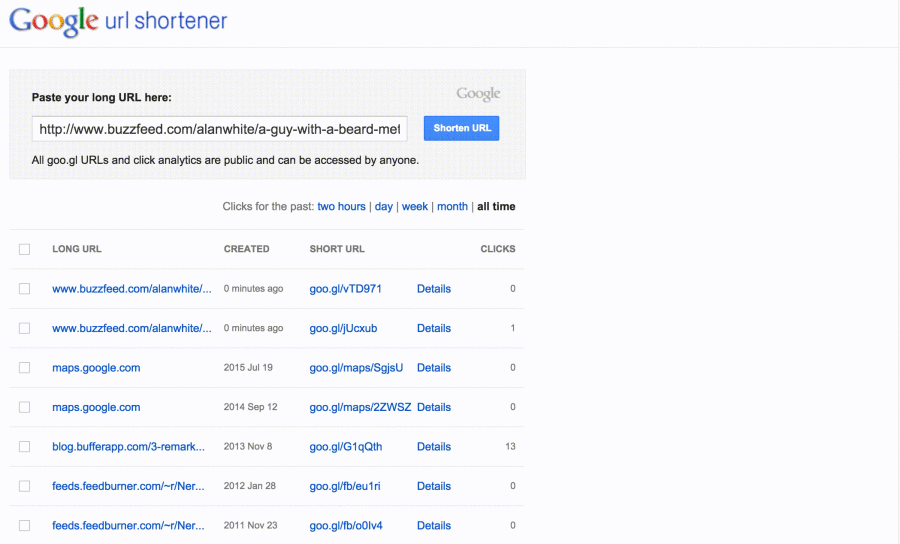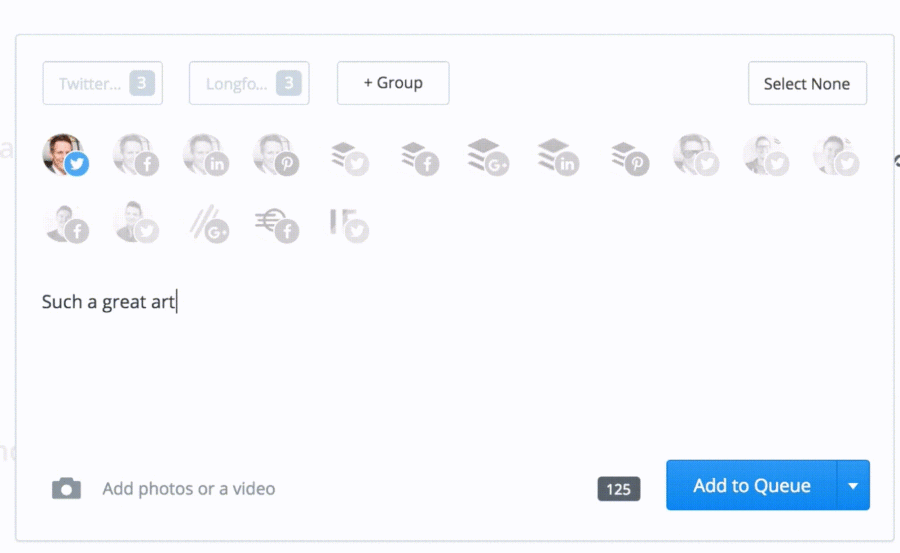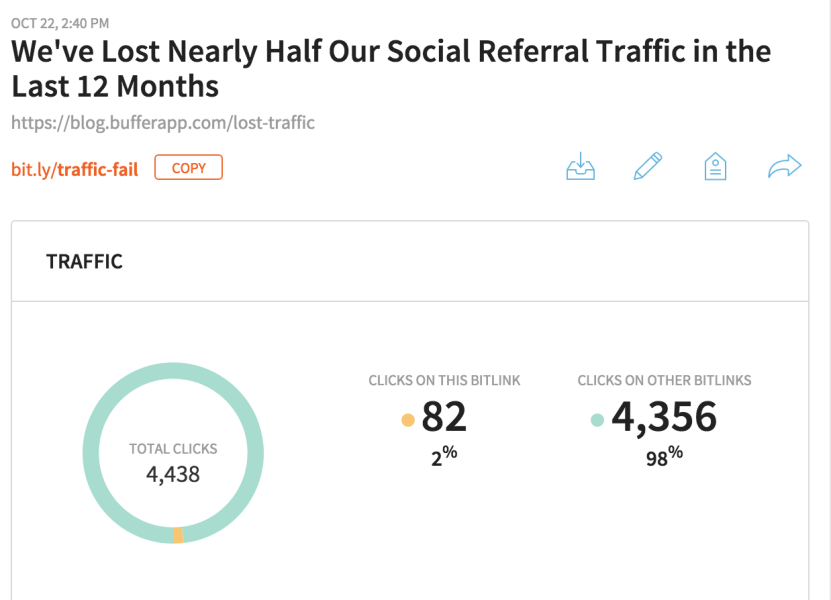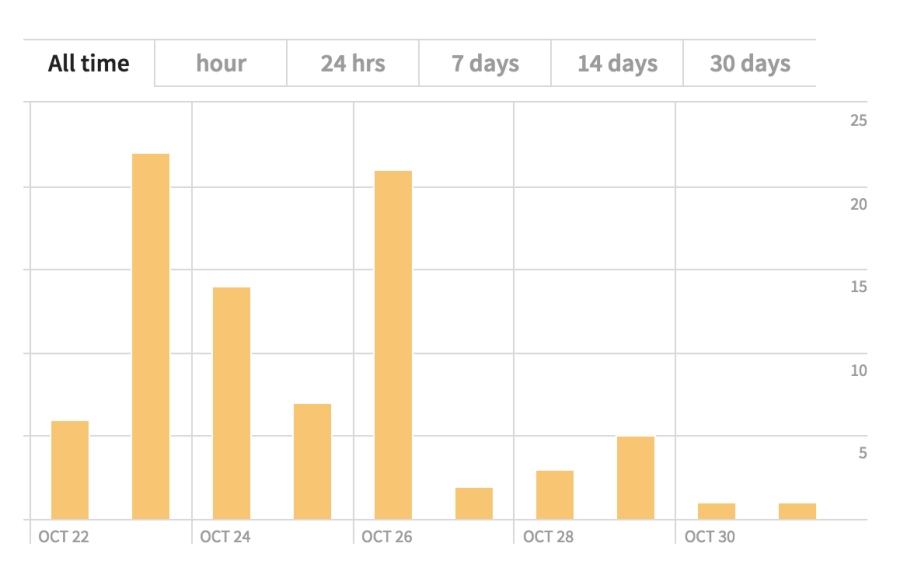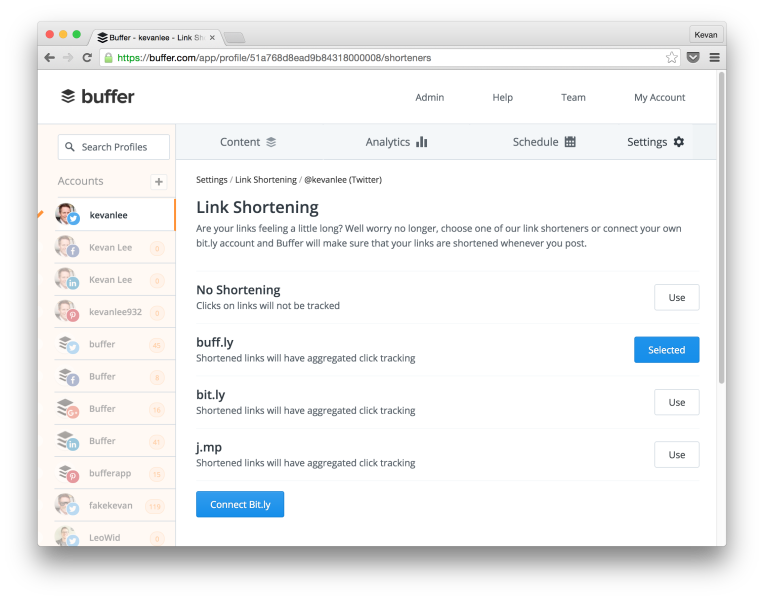I sometimes feel like URL shorteners are some of the most understated tools in internet marketing, and there have been more than a few times that I wished I’d had someone share some advice on URL shorteners earlier in my marketing career.
For instance:
What do you do with really long links?
What if you want to track the results?
What if the link—long and unwieldy—upstages the content?
So, if you’re new to the world of URL shorteners—much like I’ve been—here’s a list of things you may find helpful to know!
About URL shortening …
If you’re new to the social media marketing space, you’ve probably caught on to one of our dirty little secrets.
Links can be a little unwieldy sometimes.
They can get long.
They can get a little complex (especially when you’re tracking them).
Sometimes they can be a bit distracting.
And if you’re trying to share helpful information with a growing audience, then you don’t want the links to all that golden content to upstage your efforts!
Thank goodness for URL shorteners.
(Here’s an example, with pomeranians, of a long link that’s been shortened to buff.ly/1irhfHu.)
Jiff, the #Pomeranian, Just Won #Halloween https://t.co/6ErIpGUSwN
— David Pride (@DavidaPride) October 30, 2015
These super-simple tools can save you a good deal of headache when it comes to keeping track of your links. Plus, they make our tweets, statuses, and other updates look super clean.
Where & how can you shorten URLs?
Fortunately, we have tons of great tools at our disposal for shortening URLs, including the native networks and dashboards we use every day.
In terms of tools, there are some neat sites that handle URL shortening, including full analytics and archives of everything you shorten. For these services (and for URL shortening in general), your URL is replaced by a new domain (e.g., kevanlee.com changes to bit.ly) and the permalink is replaced by a string of numbers and/or letters (e.g., kevanlee.com/best-writing-articles changes to bit.ly/df8jpI1).
Here are handful of the more popular link shortening services:
Here’s what it looks like when you use goo.gl, Google’s URL shortener:
At goo.gl, bit.ly, and others, not only do you get a nice, clean, shortened URL, you also get stats on clicks for all the URLs you shorten.
In addition to these shortening tools, many social networks and social media management dashboards also provide a way to shorten long URLs automatically.
For instance, any link shared to Buffer will be shortened automatically once it’s added into your update.
You can choose to use Buffer’s own “buff.ly” shortener, or the shorteners at bit.ly, j.mp, or custom solutions.
Twitter automatically shortens links as well. There are a few different ways this might happen: Twitter uses it’s own t.co shortening service often on link shared on mobile devices, Twitter will sometimes include the full URL (minus the http:// part) if it doesn’t bump up against character count, or Twitter will truncate the link after showing the domain and part of the permalink. In the example below, the shortened link is 32 characters long.
Why should you shorten your links anyway?
Of course, if you’re new to the URL-shortening game, it might be good to take a quick spin through the reasons (and ways) we use URL shorteners in the first place. One of the biggest and best reasons:
URL shorteners save character count
You don’t always have unlimited space for a message. Twitter is the most famous example: you get 140 characters per tweet. The problem for Internet marketers? An everyday URL can take up half of that length. (Or more!)
For example, if you wanted to share this fantastic article on how to get your first 1,000 followers on any social network, you’d have to work with a rather long URL:
https://blog.bufferapp.com/first-1000-followers-twitter-facebook-social-media
Whoa. That’s 77 characters long—more than half a tweet’s worth! It barely leaves any room for descriptive commentary . . . let alone a witty throwaway joke.
And if you wanted to add UTM tracking codes to the link?
https://blog.bufferapp.com/first-1000-followers-twitter-facebook-social-media?utm_source=social&utm_medium=twitter&utm_campaign=blogpost-promotion
Eep!
146 characters! (Longer than the max length of a tweet!)
Now, the good news is that Twitter automatically shortens links, as do many social media management tools—including Buffer.
Let’s say I were to shorten the link above. I could come away with something like this:
http://buff.ly/1VI7t0I
Hey, that’s only 22 characters. That leaves me plenty of room to share one of my favorite insights from the article!
6 ideas for how to use URL shorteners in your marketing
1. Make links more memorable with a custom, short domain
If you ever happen to visit the Twitter feed for Moz, you might notice something unique about their links.
They’re using a custom short URL: mz.cm.
Cool!
So links like this:
https://moz.com/blog/announcing-mozcon-local-2016
Become links like this:
http://mz.cm/1gpgLAJ
This can be a really great opportunity to extend some branding into the shortened links you share on social media. And at the very least, it could make for a fun experiment to see if it helps up the engagement on your updates (I’ve heard some folks fare better with custom short URLs, some do better with full URLs, and some do better with buff.ly or bit.ly URLs.)
Kevan put together this quick video on how to set up a custom short domain. You can buy custom short domains from sites like Name.com and set them up to automatically shorten your links with bit.ly and Buffer.
And the result:
Whoa, check out this URL! It worked! :) http://t.co/OrRB8uu6lS
— Pretend Kevan (@pretendkevan) August 15, 2015
2. Track all the clicks, see how things change over time
Shortening links is valuable in and of itself—but how do you know people are clicking them?
Good news! Some URL shorteners let you track those links, too. =) There are a few ways these links tend to be tracked:
Some URL shorteners track the links themselves.
Bitly is a fantastic example of this. Bitly shows you how many times one of your links has been clicked, where the link has been shared, and how other Bitly-shortened links (Bitlinks) are driving traffic to the same content.
Here’s an example of what that looks like:
Some URL shorteners automatically attach Google Analytics tracking data.
Granted, you can manually add UTM tracking codes to any link, and then shorten them down with a basic link shortener. But some tools will let you preset those tracking codes and then automatically append them to whatever links you shorten.
This is where the Buffer link shortener really shines, in my opinion. If you’re using the Buffer for Business plan, then you can easily (and automatically) add UTM tracking codes to any link you share with Buffer. I’ll show you exactly how to do this later on in this post! =)
3. Customize a shortened bit.ly link
One thing I love about Bit.ly’s link shortening service is the ability to name short URLs. This means we can turn a link like this:
http://bit.ly/1LYGfyq
Into something that reflects the content of the link itself:
bit.ly/tips-4-tw (a link to an article on twitter tips)
Customizing a shortened link can be a fantastic way to give people a little bit of context for where they’ll go when they click that tiny link.
4. Add a shortened URL to your video
If you’re running an ad campaign that directs people to a certain website, you’ll want people to remember where they’re supposed to go.
That can be tricky when you’re dealing with a long, long URL. But a link shortener can make online destinations a great deal easier to remember.
For example, I’m writing this article as Facebook launches its killer new Lead Ads feature. It’s a sweet new way to do targeted advertising.
But all the sweet info about it is on a page with a pretty long URL:
https://www.facebook.com/business/a/lead-ads
A long URL like that might not be a problem—except that Facebook is educating people about this new feature through a video. And I don’t know about you, but I’d have a rough time remembering this URL after watching a video. 😉
Fortunately for us, Facebook shortened that link to a much more memory-friendly URL:
fb.me/leadads
That’s much easier to remember, and it looks super clean at the end of this video!
5. Add a shortened URL to a plain-text email
Most of the links people interact involve more than just a string of URL characters. We’re all probably used to clicking buttons and text links, and we don’t often find ourselves facing a long URL head-on.
This can make encountering long, “ugly” URLs (especially ones all decked out with UTM codes) even more jarring for your audience, especially in plain-text emails. Fortunately, a short URL can turn a plain-text email with long, stringy URLs into a much more readable message.
6. Add a shortened URL to a print piece
Suppose you wanted to run a print ad in a magazine for one of your products. You hope the ad will drive traffic to your site, but there’s a problem: the ideal page you want to send people to is a loooong one.
But if you shorten that URL down, you might have something not only more memorable, but more printable, too. You’ll save more of that valuable real estate for the actual ad content, and devote less of it to trying to make a long string of URL characters look pretty. 😉
But it doesn’t have to stop at print ads: a shorter URL can work for all kinds of print situations:
- Thank-you cards
- Coupon inserts
- Even letters to donors
How to shorten links in Buffer for Business
You know what link shorteners can do for you and your business. Let’s go for a spin through how you can shorten your own links (and track them) in Buffer and Google Analytics. (Heads up: this is using the Buffer for Business features.)
First log into Buffer and click “Settings.” Then choose “Link Shortening” in the drop-down menu.
That will take you to the place where you’ll manage your link shortening services (including our buff.ly link shortener) and link tracking.
Next, you can select the link shortening service you want to use. You don’t need any extra link shortening services to shorten links: we can automatically clip them down to a short buff.ly URL.
Already have a bit.ly account? No problem: you can hook your account right up to your Buffer profiles. This means Buffer will send all that tracking information right back to your bit.ly dashboard. =)
Whether you choose buff.ly or bit.ly, you can still track your clicks in Buffer! Just hop over to the “Analytics” tab.
So, what about tracking codes? If you’re using Google Analytics, you’re in for a treat: Buffer for Business can automatically add UTM tracking codes to every single link you share! All you need to do is choose the UTM codes that you want to use for your Buffer profiles, and then Buffer handles the rest. =)
Here’s how custom UTM codes work in Buffer:
To add tracking codes to your shortened links, you can scroll down to the bottom “Google Analytics Campaign Tracking” section, turn on “Enable Campaign Tracking,” and then hit that “Customize Campaign Tracking” button.
Once you hit that button, you’ll see a few fields where you can add source, medium, and campaign names to your links.
If you’d like an in-depth look at how to use UTM codes, you might enjoy this article, but in the meantime, here’s a high-level approach you might like to take for now:
- Think of your campaign name as a reason that traffic is being driven to your site. Since Buffer applies this to every link you share, it might help to simply use “Buffer” or your profile name for this piece.
- Your campaign source describes the place where traffic is coming from. One option that might be helpful is putting in the name of the social network your profile is on. (For example, if you’re sharing from your LinkedIn profile, you might want to put “linkedin” as your source.)
- Your campaign medium describes how people are getting to your site. For social media links, I normally like to set the medium to “social.”
(And of course, you can be as creative as you like with your links—these are just suggestions!)
Once you’ve added link tracking to your URL shortener in Buffer, all you need to do is start sharing links! Here’s how that plays out:
- You add a link to your Buffer queue (just like normal).
- Buffer automatically shortens it. You’ll see this happen as you’re setting up your post!
- When Buffer shortens it, the tool adds those Google Analytics tracking codes to the link as well.
- When your post goes live, your audience will only see the short link, but when they click it, they will be taken to a tagged URL!
Over to you
We’ve explored some of the basics of URL shorteners and how they work, but there’s a lot more to these tools that we haven’t covered here. I’m curious: what advice would you share with someone new to shortening URLs for their social media marketing?
I’d love to chat about it with you in the comments or on Twitter!
The Magic Behind Turning Unwieldy URLs Into Clickable, Trackable Links https://t.co/S3QotqWDl0 https://t.co/YWHysH1BNq
— Buffer (@buffer) November 2, 2015


